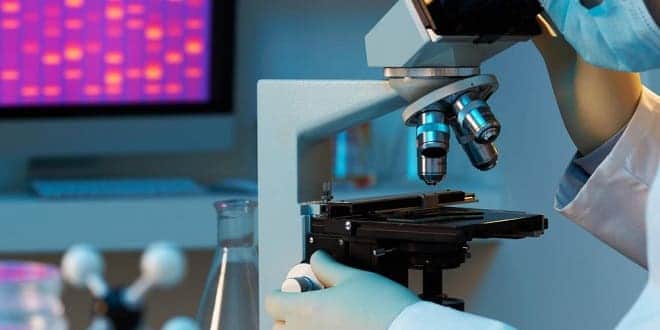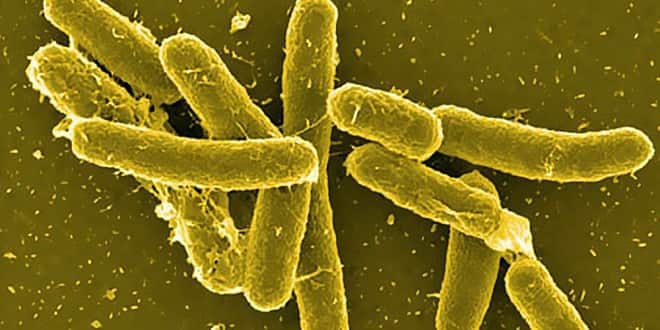Genel Mikrobiyoloji
-

Bakteri Endosporları Testi Soru ve Cevapları
1: Bir bakteri hücresinde endospor oluşumunu düzenleyen genetik düzenleyici mekanizma hangisidir? A) Sigma faktörü B) RNA polimeraz II C) CRISPR-Cas9 sistemi D) Helikaz enzimi E) Ligaz enzimi 2: Bir bakteri endosporunun direnç mekanizmalarından biri olan “dipikolinik asit” hangi yapısal özelliği ile bilinir? A) Hidrojen bağları B) Hidrofobik kuyruklar C) Disülfid köprüleri D) Aromatik halkalar E) Peptid bağları 3: Bir bakteri endosporunun olgunlaşma aşamasında hangi proteinler, endosporun içerisindeki Ca^2+-DPA kompleksini stabilize ederek termal direncini artırır? A) SpoIVA ve SpoVID B) SigE ve SigK C) GerKA ve GerKC D) DivIVA ve MinD…
-

Salmonella: Özellikleri, Bulaşma Yolları ve Tedavisi
Salmonella, bakteriyel bir enfeksiyondur ve insanlarda gastroenterit, tifo, sepsis ve diğer ciddi hastalıklara neden olabilir. Salmonella, insanlar ve hayvanlar dahil olmak üzere birçok hayvan türünde bulunabilen gram negatif bir basildir. İnsanlarda Salmonella bulaşma yolları arasında enfekte hayvanlardan ve gıdalardan kaynaklı yeme ve içme yolu, temas yolu ve kirli su kaynakları da yer alır. Salmonella’nın Özellikleri Salmonella, gram negatif bir basildir ve hareketlidir. Bakterinin şekli, uzunluğu ve kalınlığı değişebilir. Salmonella, insanlarda hastalık yapabilen iki türü içerir: Salmonella enterica ve Salmonella bongori. İnsanlarda en sık görülen Salmonella enterica türleri arasında S. Typhimurium,…
-

Staining Microorganisms – An Overview of Staining
STAINING Coloring organism with a dye Microorganisms must be FIXED to microscopic slide first Kills microbe Attaches organism to the slide Preserves various parts with minimal distortion Steps to fix: SMEAR is placed on slide and allowed to dry Passed through Bunsen burner several times Stain then applied and washed off STAINING Stains are salts composed of positive and negative ions (one is colored and is called a chromophore) Basic dyes-color is positive ion Acidic dyes- color is negative ion Bacteria are slightly negatively charged at pH 7.0, so basic…
-

Wet Mount Method and Hanging Drop Method
Two -methods are generally used, (wet method) and (dry and fix method ) for Studying Microbes with a Compound Microscope Wet Method: There are two primary methods generally used for studying microorganisms in wet conditions wet mount method hanging drop method. The wet mount A drop of fluid containing microorganisms. The fluid spreads out in a thin layer between coverslip and slide. The hanging Drop Method It is used to observe the motility, germination, or fission of microorganisms. Dry and fix method Microorganisms, particularly bacteria, being too small need their…
-

Antiseptics and Disinfectants – Evaluation Using Filter Paper Method
OBJECTIVES 1. Compare the antimicrobial capabilities of different antiseptic and disinfectant chemicals. 2. Compare effectiveness of antiseptics with different type of bacteria. 3. Utilize aseptic techniques. INTRODUCTION Both of antiseptics and disinfectants are substances are agents that kill, or at least control the growth of, microbes. Antiseptics are agents that are used on living tissue. Examples include alcohol or iodine. Disinfectants are used on non-living things such as floors, counter tops, dishes, etc. They are usually stronger and are too toxic to be used on living tissue. A common disinfectant…
-

Gastroenterit Yapan Viruslar ve Enfeksiyon Oluşturma Mekanizmaları
GASTROENTERİT YAPAN VİRÜSLER • Viral gastroenteritler fekal oral yolla bulaşmaları nedeniyle, alt yapı yetersizliği bulunan gelişmekte olan ülkelerin en yaygın hastalıkları arasındadır. • Tüm yaş gruplarında endemik ve epidemik olarak görülmektedir. • Genellikle kendiliğinden iyileşmekle beraber yaşlılarda ve bebeklerde öldürücü olabilmektedirler. • Gastroenterit etkeni olan virüsler farklı virüs familyaları içerisinde yer almakta olup, bu virüsler şunlardır. 1 – Reovirus 2 – Rotavirus 3 – Adenovirus 4 – Echovirus 5 – Norwalk Ajanı 6 – Calicivirus 7 – Coronavirus 8 – Astrovirus REOVİRUS • Reoviridae ailesinde yer alan virüslerdir. • Tüm…
-

Culture Characteristic of Bacteria ( Samira Fattah )
• Bacteria grow on solid media as colonies. • A colony is defined as a visible mass of microorganisms all originating from a single mother cell. Colony Morphology • These characters used to accurately describe the morphology of a bacterial colony: -Size -Shape -Color (also known as pigmentation) -Texture -Height (elevation) -Edge (margin) • Key features of bacterial colonies are important criteria for their identification. COLONY CHARACTER ON AGAR PLATE • Colony shape on agar plates Rhizoid Circular Pinpoint • Margin of bacterial colony Undulate filamentous • Elevation of bacterial…








